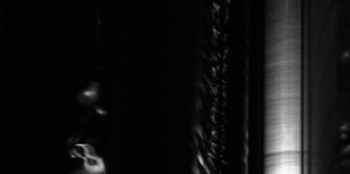fields
électriques
Gary James Joynes
Originally appeared in Vague Terrain 05: Minimalism
PROVODY
"Music is not painting, but it can learn from this more perceptive temperament that waits and observes the inherent mystery of its materials, as opposed to the composer's vested interest in his craft. 1"
Morton Feldman
MP3 Download (58MB)
What is Sound Art Minimalism? Does it apply to my work?
To contextualize my work as Clinker and answer these questions, I was drawn to an article featuring Morton Feldman. I resonate with his quote as I feel it describes my process accurately, being both professional musician and visual artist for nearly 20 years. Regarding Feldman’s influence the author states… “But we miss Feldman's significance altogether if we don't see that the most important thing he brought back from painting was the artist's attitude of subjective immediacy in an era in which composers had become theorists and technicians. 1” Again these words resonate with me. Lately, I have found myself shifting focus from “technicalities” of composing and production to a place where my instinct directs my work, becoming more and more process-based. Responding to Feldman’s statement I see my work as being very similar to painting with sound in an abstract sense.
Minimalism has found expression through art and design, but especially music, where the work is stripped down to its most fundamental features and core self-expression. In most cases the palette available to musicians consists of using elements of Repetition and Iteration (with variations over long periods of time), Stasis – often in the form of long tones and drones, and emphasis on a steady Pulse and evolving Textures. I have been applying these elements and processes to my work as Clinker, for many years. If however, you take minimalism literally as something that is “stripped down” and devoid of emotion, then I hesitate to call myself a “minimalist.” In the end, it is the emotive quality of the work and the constant evolution of the piece that interest me the most. So, can my work still be called minimalism?

PROVODY
In an essay entitled “Expanding On Minimalist Music” author John Rockwell writes of a “motoric, kinetically engrossing style that deals in hypnotically shifting textures and busily engaging meditative moods 2.” PROVODY embodies all of these and is an example of my experimentation and creation of “extended” deep-listening experiences.
PROVODY is a Ukrainian ritual for “the blessing of the graves.” I first became aware of this from my girlfriend whose family gathers annually to pray, remember and pay homage to relatives that have passed on. She describes her personal experience with this as an emotional journey. I titled this piece PROVODY because I feel a parallel between this ritual and the flow of emotions... reverie, sadness, loneliness, anger, loss, joy, peace, healing, contentment… one goes through at different stages of one’s life. I feel cleansed after listening to it.
PROVODY is comprised of five movements of varying intensity that are both kinesthetic and synesthetic agents. These sensory components are not only present in this particular piece, but in my work in general. I have always been interested in the physical effects of sound and it is a recurring theme in my work.
So, again, is my music minimalism?
“… a new generation of composers is working within that structure to create what is essentially the new art music. This phenomenon is an outgrowth of such historical currents as minimalism and postmodernism, along with the continuing development of a global techno-culture; it is part of a larger cultural shift in which art is becoming more connected with society rather than being created by and for specialists. This positive development is being accelerated by the rapid evolution of new technologies for producing and reproducing music today, as well as by new possibilities for distribution and dissemination of music electronically.3”
For me, the creative process has to transcend the mechanics of electronic composition and access what Feldman describes as “the inherent mystery of its materials.1” When I reach that point in a piece I consider it successful. I believe a work should be a catalyst, and that people must be allowed to experience it on their own terms. As Clinker, I feel my music is minimalism in a broader sense, because I believe “minimal” electronic music needn’t be disembodied and soulless at the cost of losing the emotional experience.
Clinker
Gary James Joynes / November 2006
(Note: This article evolved from a discussion with friend/collaborator I. Rousseau, after her listening experience of PROVODY the previous day.)
1 Gann, Kyle. Painter Envy: Morton Feldman Ascends his Pedestal as Softly as Possibly
2 Rockwell, John. Expanding On Minimalist Music. Published: February 10, 1985
3 Neill, Ben. Pleasure Beats: Rhythm and the Aesthetics of Current Electronic Music. MIT Press Journals. December 2002, Vol. 12, Pages 3-6
Gary James Joynes' biography
